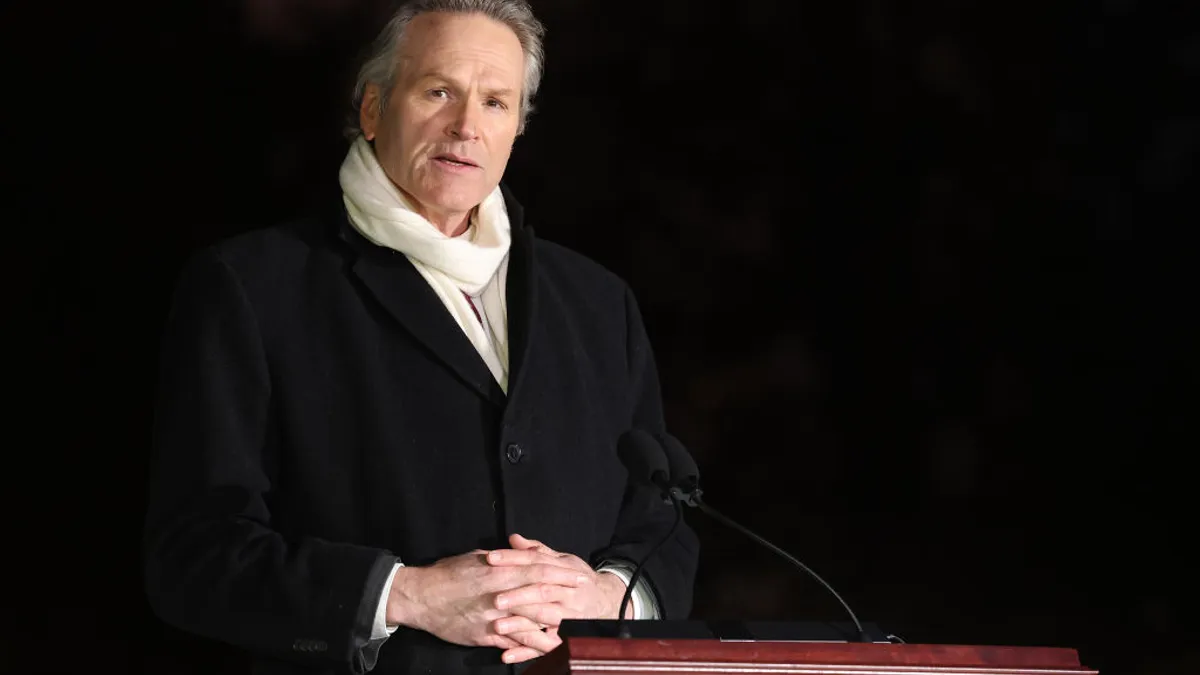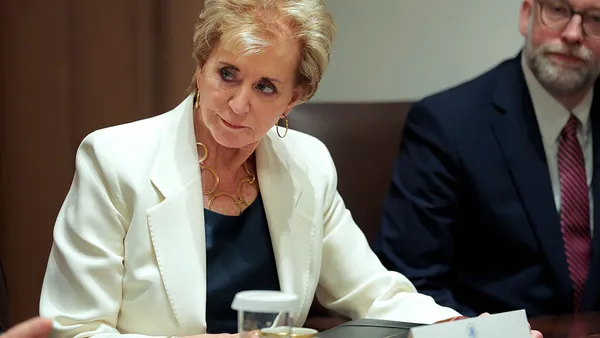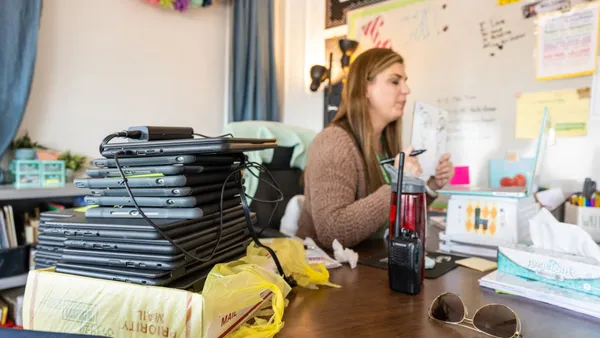Dive Brief:
- Career and technical education, teacher workforce funding and student achievement are some of the main education policy priorities for governors across the country, according to a report from the Education Commission of the States and the National Governors Association.
- The report tracked and analyzed 2025 State of the State addresses so far this year from 49 governors, including the U.S. Virgin Islands and Guam. The State of the State Address is an annual speech given by state governors that provides the opportunity to outline policy priorities and elevate successes.
- The top education policy trend this year, the report found, was workforce development opportunities for students. Thirty-three governors discussed career and technical education as an opportunity to prepare students for entering the workforce and bolster the economy.
Dive Insight:
The Education Commission of the States has tracked and analyzed trends in education policy accomplishments and proposals featured in governors’ State of the State addresses for the last 20 years. This is the sixth year the commission has partnered with the National Governors Association to create a special report that highlights the top education policy topics mentioned.
The 33 governors speaking about CTE also discussed internships and apprenticeships as avenues to gain real-world skills that prepare young people for workforce demands.
Some states highlighted their current offerings and programs, like Tennessee’s Youth Employment Program and Wyoming’s Innovation Partnership. Others, like Delaware and Oklahoma, highlighted incoming legislative efforts to provide more workforce development opportunities.
In previous years, K-12 funding has been a consistent priority expressed across most of the state addresses. This year, at least 32 governors addressed funding, and several highlighted historic investments in K-12 funding — like Nevada’s investment of over $2 billion in new funding for students and schools last session, which marked the largest education investment in the state’s history.
Fiscal certainty for school districts is one of the fundamentals that can improve student success, said Oregon Gov. Tina Kotek in her address.
Federal funding for K-12, however, is facing some risks. While the Trump administration has promised to preserve “all statutory programs that fall under the agency’s purview,” such as funding for students with disabilities, the downsizing of the U.S. Department of Education is putting school districts at financial risk, according to Moody's Ratings.
Teacher workforce is another common priority among governors. At least 26 mentioned teacher recruitment and retention or teacher compensation, the report states.
Some states like Connecticut and Maryland are trying to create workforce programs that bring more diverse teacher demographics, while other states mentioned recent investments into teacher salaries.
Indiana highlighted legislation that will raise the minimum salary for public school teachers by $5,000 and require that 65% of state school funding support to districts go to teacher compensation.
Cuts to the federal Education Department have also impacted the teacher workforce. On April 4, the U.S. Supreme Court granted the Trump administration’s emergency request to maintain a freeze on millions of dollars in federal teacher training grants.
Additionally, at least 25 governors addressed academic achievement, including commitments to math and reading instruction. Several states created and implemented literacy and proficiency programs that have shown growth and increased scores.
For example, Alaska Gov. Mike Dunleavy spoke about early data from the state's implementation of the Alaska Reads Act. In his address, Dunleavy said that the percentage of Alaskan students who met early literacy benchmarks grew from 41% to 57%.
According to the report, governors stressed the importance of early literacy skills for life-long achievement. Science of reading was also highlighted as a major contributor to building early literacy skills.







 Dive Awards
Dive Awards





